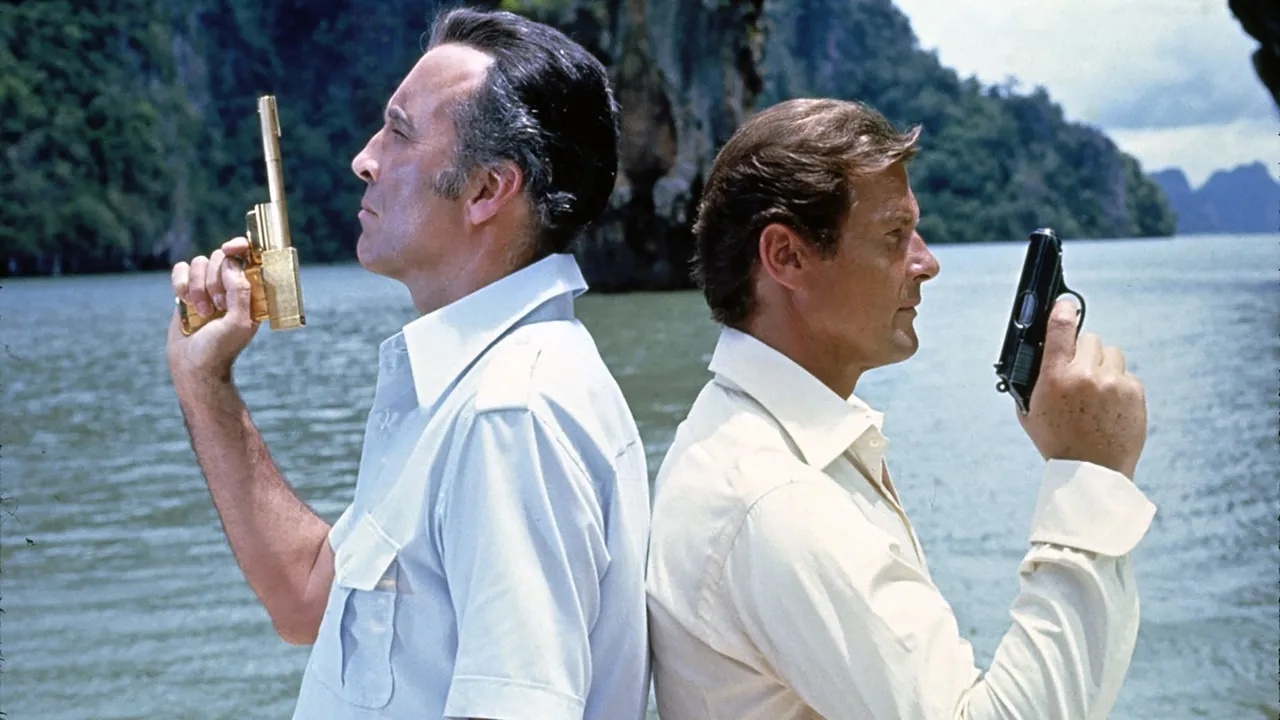
In early 1970s United Kingdom was facing economic and political crisis of such magnitude that many believed that it’s days were numbered. Same fate was predicted for one of its most popular cultural exports – James Bond film series. At least such impression was going to be made after relatively poor critical reception of 1974 film The Man with the Golden Gun, directed by Guy Hamilton.
The script by Richard Maibaum and Tom Mankiewicz, although nominally based on Ian Fleming’s last novel, actually addressed Britain’s economic woes, exacerbated by 1973 Oil Shock. At the beginning, British secret agent James Bond (played by Roger Moore) is tasked with locating British scientist who developed “solex” – device that could provide cheap and practical form of solar energy. The scientist has apparently defected and offered his discovery to the highest bidder but Bond is in the middle of investigation taken off the case because of more pressing personal matter. His superiors were warned that James Bond became object of interest of Francisco Scaramanga (played by Christopher Lee), the most dangerous and the most efficient professional assassin in the world, known for killing his targets with a single shot from specially manufactured golden pistol. Convinced that he is the next target, Bond begins investigation and the trail leads to Hong Kong, where he would receive some aid from his old assistant Mary Goodnight (played by Britt Ekland). Bond tracks the gun and ammo manufacturer and later identifies Andrea Sanders (played by Maud Adams) as Scaramanga’s courier and lover.
Production of The Man with the Golden Gun was marked by quarrels between Tom Mankiewicz and Guy Hamilton, as well as widening chasm between the producers Cubby Broccoli and Harry Saltzman, with the latter leaving the franchise soon afterwards. In such circumstances, franchise and the film began to lose focus and an attempt to compensate for that was in increased levels of fan service. Its most obvious form was in almost all female characters appearing nude or semi-nude. Younger audiences were lured with long scenes featuring long displays of various martial arts, in an obvious attempt to exploit the kung fu film craze. Lack of truly spectacular action was somewhat compensated with the “corkscrew” car jump over the river, one of the first stunts devised through computer simulation. And anti-establishment youths were again courted by the annoying appearance of Southern redneck Sheriff Potter (played by Clifton James), here conveniently appearing as tourist in Thailand. An attempt to bring Roger Moore’s suave aristocratic Bond to rougher and meaner character of Connery years resulted in few scenes in which protagonist indulged himself in morally questionable actions, like slapping women or cheating Thai boy of his money. Feminists were, on the other hand, enraged with Mary Goodnight being portrayed as incredibly inept and stupid woman, whose clumsiness and lack of clue often brought more mortal danger to Bond than Scaramanga and villainous hordes. Use of French actor Hervé Villechaize in the role of Scaramanga’s dwarf sidekick Nack Nack, although it provides comedy at times, might look unpleasantly exploitative. Title song, performed by Scottish singer Lulu, is one of the weakest in the history of franchise and even the composer John Barry was publicly dissatisfied with his score.
Yet, despite all these flaws, The Man with the Golden Gun is still a very solid film that could entertain even the viewers who aren’t big fans of James Bond. This is mostly due to Christopher Lee, prolific character actor and Fleming’s cousin, who probably understood the franchise better than any actor. His portrayal of Scaramanga results in what is arguably the best Bond villain ever. He very ingeniously plays that character as some sort of “anti-Bond”, a man whose suaveness, good taste, playboy lifestyle, taste for adventure and superb killing skills in many ways mimic the protagonist. In Bond he sees the only worthy opponent and his motive for killing him is more personal than ever. Some of the latter Bond films would also feature villains as some sort of Bond reflections, but never as effectively as in The Man with the Golden Gun.
Moore is also very good in this film and relatively easily manages to around through some of the traps left by subpar script. Swedish actress Maud Adams is also surprisingly good in the thankless role of Scaramanga’s ill-fated mistress and leaves much better impression than her seemingly more stellar compatriot Britt Ekland; it is easy to see how she became one of the rare of Bond girls to appear again as Bond girl (as the title character 1983 Octopussy). Film still contains a lot of humour and the lack of gadget forces Bond to improvise more and use his ingenuity in order to get himself out of trouble. The critics didn’t like film many decades ago and they don’t like it now. But it made solid results at the box office and justifiably so. Just like United Kingdom, James Bond franchise survived its ordeal.
RATING: 6/10 (++)
Blog in Croatian https://draxblog.com
Blog in English https://draxreview.wordpress.com/
Leofinance blog @drax.leo
Cent profile https://beta.cent.co/@drax
Minds profile https://www.minds.com/drax_rp_nc
Uptrennd profile https://www.uptrennd.com/user/MTYzNA
Hiveonboard: https://hiveonboard.com?ref=drax
Rising Star game: https://www.risingstargame.com?referrer=drax
1Inch: https://1inch.exchange/#/r/0x83823d8CCB74F828148258BB4457642124b1328e
BTC donations: 1EWxiMiP6iiG9rger3NuUSd6HByaxQWafG
ETH donations: 0xB305F144323b99e6f8b1d66f5D7DE78B498C32A7

